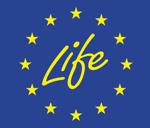
By Daniel Vázquez Tous and Benoît Lefèvre (AQUATEC)
Today, throughout the Mediterranean arc and in countless arid or semi-arid lands of the Earth, the problem of drought and water scarcity is notorious and is growing at a dizzying rate year after year. This water scarcity often translates into high electrical conductivity and salinity of the water. If we add to this problem the fact that many farmers use too much nitrogen fertilizer for fear of leaching with irrigation or rainfall, we have a generalized triple problem.
Therefore, LIFE CONQUER intends to try to correct and add value to the elimination or mitigation of these three problems.
If we include a membrane-based water treatment solution that allows the passage of excess nitrates and their reuse as nutrients for irrigation and the partial removal of salinity, we will have done a great job for the care and protection of the environment. Thanks to this solution, large volume of unused contaminated groundwater will be made available for irrigation.
In this way, we avoid the continuous desertification of many areas of the planet with these problems, as well as avoiding the excessive contamination of aquifers with nitrates and the harmful effect of eutrophication that this element has on the water.
“Desertification, salinization of the aquifers and the excess of nitrates are the three main problems LIFE CONQUER aims to eliminate or mitigate”
The problem of increasing soil salinity poses major challenges for farmers and scientists around the world. The area of salt-affected soils is expanding as a result of decades of mismanagement and industrial agriculture. Most crops are not salt tolerant. Food security and well-functioning ecosystem services are therefore at risk. And climate change is only making things worse.
Soil salinization is one of the main causes of desertification. UN and FAO studies show that 833 million hectares of land (four times the area of India, and 9% of the total area) are affected by salt, due to human activity. Since the 1990s, this figure has increased to about 5,000 hectares per day. Faced with this alarming trend, FAO has raised awareness of soil salinization and sought to educate the public and policy makers about this phenomenon, in the run-up to World Soil Day on December 5, 2021. Soil salinity has been mapped and the World Map of Salt Affected Soils, available to everyone, has been published.
Reference: GSASmap. FAO.
The challenge as it can be seen is huge, both the UN and the FAO have in mind to reverse this trend and LIFE CONQUER wants to contribute to it.
References
Joint Research Centre (JRC): Sustainable agriculture and soil conservation, Soil degradation processes.
Nature, Planetary limits to soil degradation.
FAO, Global Soil Partnership, Global Map of Salt-Affected Soils.
FAO, Voluntary Guidelines for sustainable soil management.
UN Natural Resources Forum, Salt-induced land and water degradation in the Aral Sea basin: A challenge to sustainable agriculture in Central Asia.
Earth Observation System, Soil Salinization.
JRC, World Atlas of Desertification, Soil Salinization.
Diamond, Jared. Collapse. Penguin Books, 2011.
Photo Salty Soil EU JRC.
Kathelijne Bonne, GondwanaTalks. La salinización del suelo, un riesgo para la seguridad alimentaria.